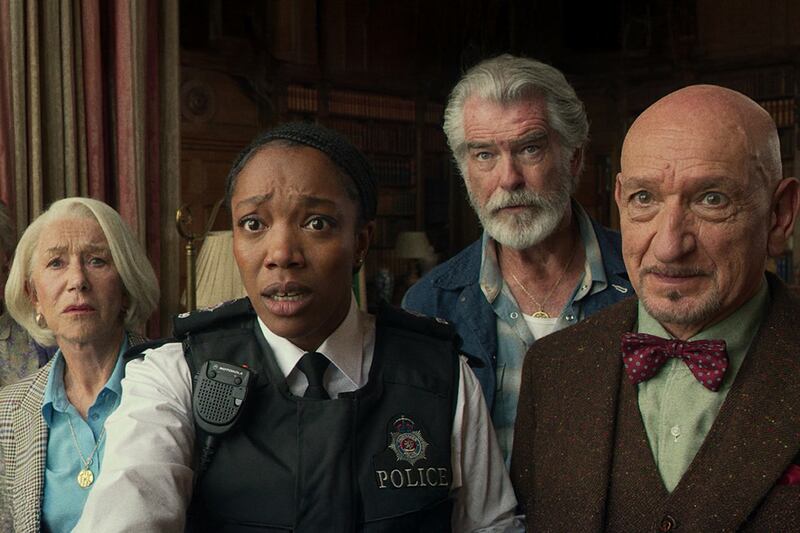Paul Nugent: Figures in Yellow Ochre Light and Other Paintings
Kevin Kavanagh gallery, Dublin
★★★★☆
In the documentation of geological hazards, the best known incidents of catastrophe – earthquakes, volcanoes, avalanches – are described as “sudden phenomena”, due to the speed at which these life-threatening transformations take place. However, there is another class of environmental disaster that happens at a different pace. Geologists refer to events that involve drastic but gradual change in the morphology of landmasses as “slow phenomena”, and they include incidents such as sand-dune migration, shoreline erosion and ground subsidence. While less ostentatious, less spectacular than their sudden counterparts, these events are no less impactful. Indeed, their impact may be even greater due to the barely perceptible modifications and shifts that constitute their progress: it may take decades, even centuries, before anyone becomes aware that something momentous has been taking place.
This sidetrack should strike a chord with anyone familiar with the work of Paul Nugent. In paintings like Nugent’s, time is the key ingredient – his works require the audience to stand and wait, in gradual absorption, as the many details of paintings are slowly revealed. Each time a new layer of experience is discovered, another seems to simmer just below the surface, leading to a unique phenomenological attitude while appreciating his work.
In this latest show, Nugent takes as his central visual motif a group of people in a forest clearing. The purpose of this gathering is not clear: it seems to oscillate somewhere between an ordinary social event and a shamanic ritual. Nugent’s singular approach involves the re-creation of a photograph in oil paint. Each painting is dictated in one primary colour, such as blue or yellow ochre, but with varying degrees of resolution, so that elements of the scene tremble at the threshold of visibility. In some instances, the same image haunts the surface of several paintings; its appearance in different saturations of colour give that image another aspect, another set of mental or emotional associations, mimicking the adaptive process of memory, where reminiscences of the same event take on different meanings as our store of experience grows, our norms shift and our mood changes.

For the gallerist Kevin Kavanagh, the reason for the conclave is less important than the fact that the group are unencumbered by the trappings of contemporary technological life, as though enlightened luddites. This feature of the paintings at the level of content endorses their reality on the level of form: opposed to the kind of schizophrenic attention that our smartphones and social media elicit, Nugent’s work demands the labour of slow looking.
RTÉ was quick to name Claire Byrne’s successor, but Newstalk is the big winner here
‘My wife and I had the TV on and we saw the Angelus. I’m like, Oh God, they’re still doing that’
Kiisaan review: The lamb chops at this Dublin restaurant are among the best in Ireland
Thursday Murder Club review: The weak link here, sadly, is the greatest James Bond of all
“Slow looking” and “slow painting” are two sides of the same coin, and both are standard terms in the lexicon of art critics who approach paintings like Nugent’s. While they communicate something essential about the requirements these works place on the audience, these terms can also mislead. After all, while Nugent’s paintings demand you to stay still, their depth gives you a lot to work with: the turnover of your conscious state, reflecting on the appearance of each nuance or layer in the image, can happen quickly.
The impact is subtle. But as with the geological phenomena referenced at the outset, subtle modifications can lead to profound results.
Figures in Yellow Ochre Light and Other Paintings is at Kevin Kavanagh gallery, Dublin, until Saturday, May 4th












